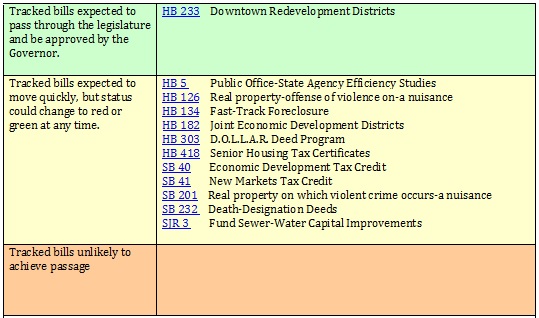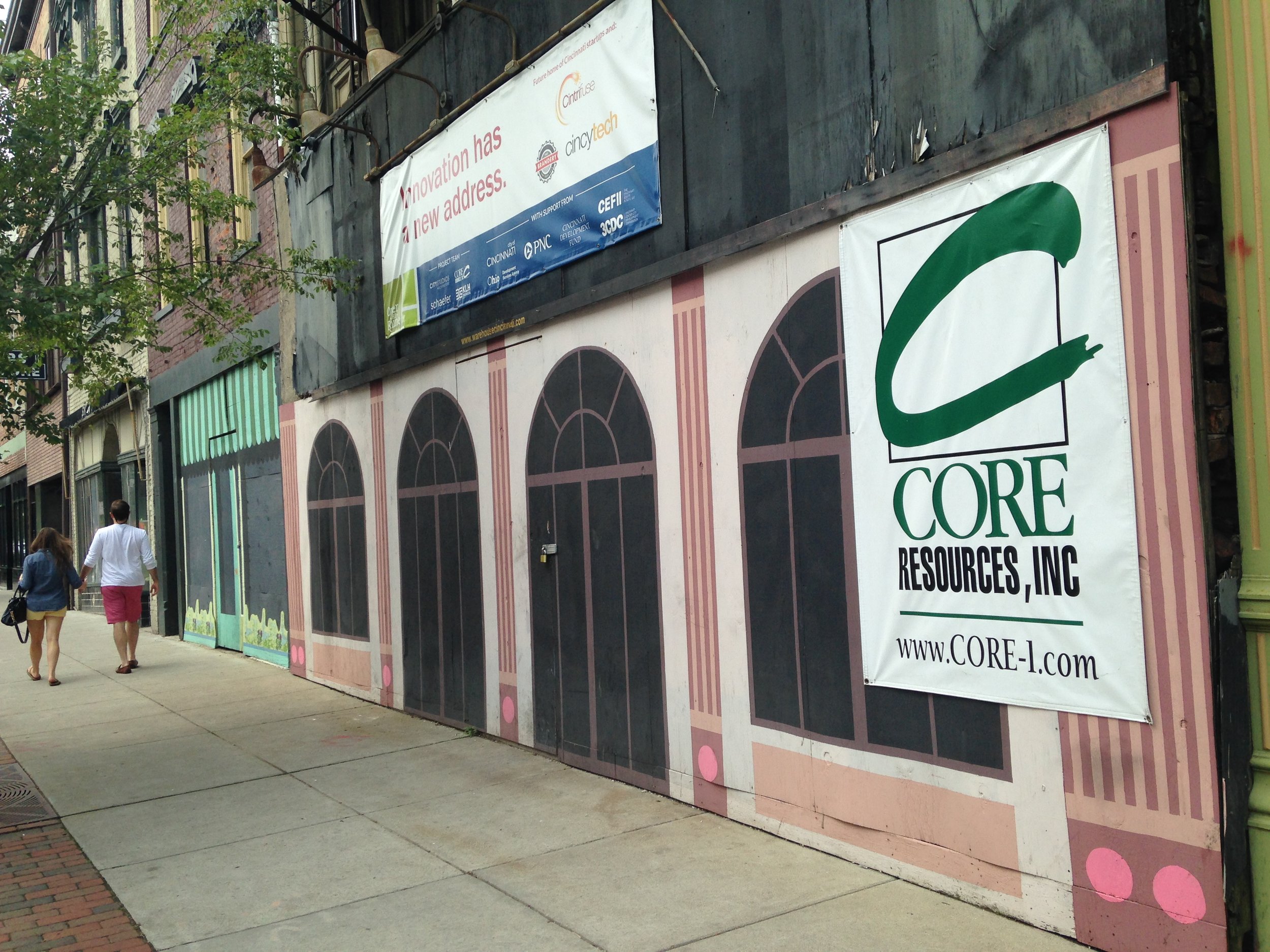By Lindsey Gardiner, GOPC Manager of Government Affairs The following grid is designed to provide you with insight into the likelihood of passage of the legislation we are monitoring. Please note that due to the fluid nature of the legislative process, the color coding of bills is subject to change at any time. GOPC will be regularly updating the legislative update the last Thursday of every month and when major developments arise. If you have any concerns about a particular bill, please let us know.
Updates on Key Bills: 
 HB 303 UPDATE: HB 303 continues to move smoothly through the legislative process and was referred to the Senate Financial Institutions Committee on January 20th. With the Ohio Housing Finance Agency’s support of HB 303, GOPC is optimistic members within the Senate will aptly receive the bill. GOPC offered Interested Party testimony on behalf of HB 303 and plans to continue offering support as it proceeds through committee within the Senate.
HB 303 UPDATE: HB 303 continues to move smoothly through the legislative process and was referred to the Senate Financial Institutions Committee on January 20th. With the Ohio Housing Finance Agency’s support of HB 303, GOPC is optimistic members within the Senate will aptly receive the bill. GOPC offered Interested Party testimony on behalf of HB 303 and plans to continue offering support as it proceeds through committee within the Senate.
 HB 340 UPDATE: GOPC is happy to report that HB 340 was signed into law on December 22nd, just 9 days before the Local Government Innovation Council (LGIC) was set to expire. As we reported in December, HB 340 contained more than an emergency extension of the LGIC as it soon became known as a budgetary corrections bill as well. GOPC commends the Legislature for coming together to extend the LGIC, which has provided loans and grants for local government innovation projects to hundreds of communities across the state.
HB 340 UPDATE: GOPC is happy to report that HB 340 was signed into law on December 22nd, just 9 days before the Local Government Innovation Council (LGIC) was set to expire. As we reported in December, HB 340 contained more than an emergency extension of the LGIC as it soon became known as a budgetary corrections bill as well. GOPC commends the Legislature for coming together to extend the LGIC, which has provided loans and grants for local government innovation projects to hundreds of communities across the state.
 HB 233 UPDATE: HB 233 continues to move through the legislature as it was scheduled for a second hearing in the Senate Ways and Means Committee. Five witnesses testified as proponents to the bill, which included Youngstown State University President Jim Tressel; Shaker Heights Mayor Earl Leiken, the Canton Regional Chamber of Commerce, and the COO of the City of Toledo Eileen Granata. GOPC has offered interested party testimony for HB 233 while it was being vetted by the House, and we look forward to offering interested party testimony in a future hearing.
HB 233 UPDATE: HB 233 continues to move through the legislature as it was scheduled for a second hearing in the Senate Ways and Means Committee. Five witnesses testified as proponents to the bill, which included Youngstown State University President Jim Tressel; Shaker Heights Mayor Earl Leiken, the Canton Regional Chamber of Commerce, and the COO of the City of Toledo Eileen Granata. GOPC has offered interested party testimony for HB 233 while it was being vetted by the House, and we look forward to offering interested party testimony in a future hearing.
 SB 232 UPDATE: Earlier this week, the Senate Government Oversight and Reform Committee heard proponent testimony for SB 232. The Ohio State Bar Association was the only organization that offered testimony in support of the bill. Currently, there is no legal protection between ex-spouses for real estate that passes by way of a transfer-on-death (TOD) affidavit or deed. SB 232 intends to bring TOD affidavits and deeds for real estate in line with other areas of the Revised Code. GOPC commends Senator Kevin Bacon (R-Franklin) for championing this corrective legislation and plans to offer support of the bill that will help establish consistency with respect to the legal effects of divorce, dissolution, and annulment on beneficiary designations.
SB 232 UPDATE: Earlier this week, the Senate Government Oversight and Reform Committee heard proponent testimony for SB 232. The Ohio State Bar Association was the only organization that offered testimony in support of the bill. Currently, there is no legal protection between ex-spouses for real estate that passes by way of a transfer-on-death (TOD) affidavit or deed. SB 232 intends to bring TOD affidavits and deeds for real estate in line with other areas of the Revised Code. GOPC commends Senator Kevin Bacon (R-Franklin) for championing this corrective legislation and plans to offer support of the bill that will help establish consistency with respect to the legal effects of divorce, dissolution, and annulment on beneficiary designations.
New Bills & Explanation of Bill Impact on Economic Development within Ohio:
HB 418 is sponsored by State Representative John Barnes (D-Cleveland). This bill proposes to enact the “Senior Housing Relief Act”, which will prohibit the sale of delinquent property tax certificates for homesteads owned for at least 20 years by a person aged 65 or older. Currently, local governments can place a lien on a property that is delinquent in property tax payments. HB 418 would remove properties that fall under the Senior Housing Relief Act from the list of parcels that may be selected for a tax certificate sale. HB 418 seeks to address an increasingly serious issue many Ohioans within the elderly community face. This bill will provide a much-needed supportive service to communities and will have positive long-term effects as it will keep people in their homes thus preventing blight.
For more details and information on legislation that GOPC is tracking, please visit our Previous Legislative Updates.




